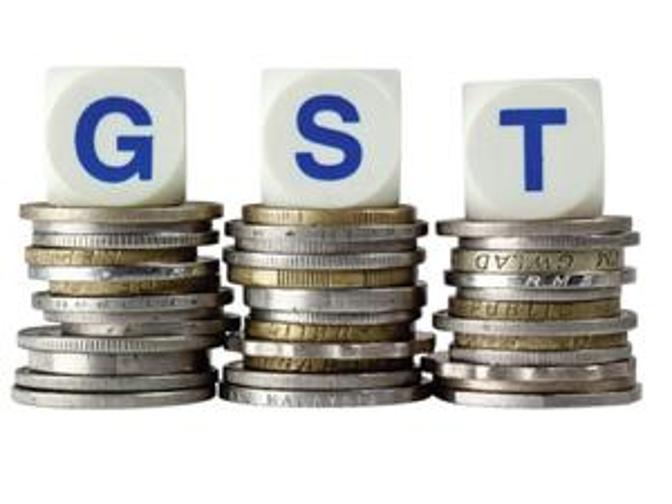By Shreya Kedia
- It is commendable that the back and forth between the Centre and the States over the Goods and Services Tax (GST), that had been going on since the passage of the Constitution (122nd Amendment) Bill, has finally come to an end. As per the agreement reached, it is a win-win situation for both the Centre and the States. Finally, a uniform GST regime is not too far, and will likely be in force by July this year. This is a big achievement for the Narendra Modi Government and Union Finance Minister Arun Jaitley in particular who helmed the effort.
Both the States and the Centre had intense parleys over the jurisdiction of taxes over high-sea sales; finally a consensus was evolved on administrative control of the tax-payer base. This was reached after the Centre gave liberal concessions to the States, to equally split the tax-payer base on the annual turnover. Dual control and taxing rights were the two major obstacles that had been impeding the process of the introduction of a destination-based tax system.
While all States were content with the new set of arrangement, West Bengal was the lone one to not come on board. In fact, post-demonetisation, West Bengal has been at loggerheads with the Centre on the GS, although it had been one the main supporters throughout the process. Ultimately, it was left isolated as the Centre and the States marched ahead. The end result was that the West Bengal Finance Minister, who was on the GST Council, had to be content with submitting a dissent note.
In the wake of demonetisation, a number of States demanded extra compensation to counter-balance tax revenue losses in the wake of the currency ban. Their argument was that demonetisation had led to a decline in consumer sales, which in turn led to a loss of local tax collections. To make up for this loss, they had been demanding complete control over the tax-payer base.
Many may have expressed dissatisfaction over the delay in the rollout of the GST, but the flip side is that this delay will achieve a major goal. It will give industries sufficient time to prepare for this major reform – perhaps the biggest in tax revamp since independence. Now that the major obstacle of dual price control has been resolved, the final rollout must not be in haste. A realistic view will reveal that companies will require at least three months’ time after the passage of GST law, to set right their accounting systems so as to draw up an invoice that is in conformity with the necessities of the new tax regime to be launched in July. The industry needs sufficient time to do its homework for a secure roll out of GST. However, the best part is that the deal has come without sacrificing on the basic principle – the tax-payer will not have to report to more than one authority.
A perspective view of the demand by States and the final agreement:
- State Finance Ministers had been arguing for total control over assesses with a turnover below Rs 1.5 crore. Under the agreement, States will administer 90 per cent of all assesses with a turnover of Rs 1.5 crore or less, and the Centre will assess the remaining 10 per cent.
- For limits above Rs 1.5 crore, the States were looking for 67 per cent control; this ratio now is more equitable, and will be shared on a 50:50 basis between the States and the Centre.
- States would also have the powers to levy tax on economic activity within 12 nautical miles of territorial waters even though rights on the waters constitutionally vest with the Centre.
- The power to levy and collect Integrated-GST, a tax on inter-State movement of goods and services, will lie with the Centre, but by special provisions in the law, States will also be cross-empowered.
Now that a historic agreement has been achieved, the Government now faces the herculean task of finalising the draft legislation and rules; to get them approved in Parliament in the Budget Session; and to lock the rate slabs. Crucial among the above mentioned tasks is the fixation of slab rates, though some agreement has been arrived at in this regard. The Government will naturally give the same sense of understanding to draft the rules and regulations for GST, which is crucial for businesses, as it has done in the case of resolving the apprehensions of the States.
As per a November meeting last year, the GST Council had approved a four-tier rate structure:
- A high tax rate of 28 per cent was fixed for luxury items, demerit and sin goods, such as luxury cars, pan masala, aerated drinks, and tobacco and tobacco products will come at the cost of a cess.
- A standard rate of 18 per cent may also include goods increasingly used by common households.
- A twelve per cent tax rate would be the standard concessional rate of tax.
- For items of mass consumption, including essential commodities, a five per cent rate was agreed upon.
- Those with nil tax include about 50 per cent goods in the consumer price index.
- No specific rate has been prescribed for services.
The breakthrough that has been arrived at is a fine example of cooperative federalism at play, where both the Centre and the States, regardless of political differences, worked in tandem for the larger good of the country, without compromising on the States’ interests.
(The writer is a practising journalist)
(The views expressed are the author's own and do not necessarily reflect the position of the organisation)

